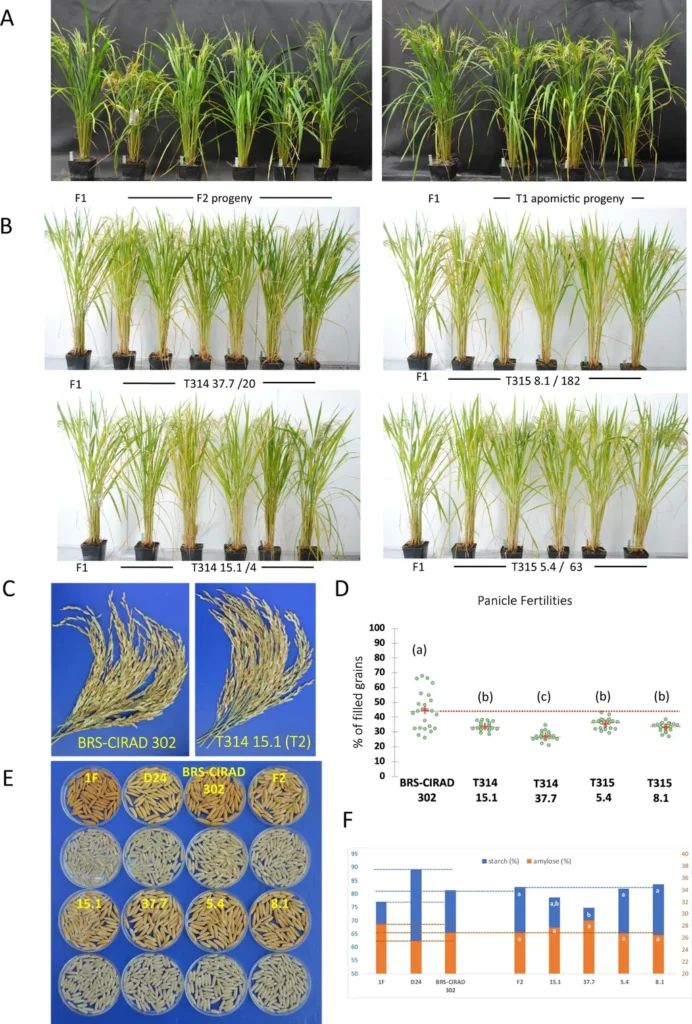In the quest to feed a growing global population, rice remains a cornerstone of food security, serving as a staple for over half the world. To meet the increasing demand, scientists and agronomists have long turned to hybrid rice technology, which harnesses the power of heterosis, or hybrid vigor, to boost yields by 15–20% compared to traditional varieties. Now, a groundbreaking study published in *Plant Production Science* has unraveled some of the genetic mysteries behind fertility restoration in hybrid rice, offering promising avenues for future breeding programs.
The research, led by Deepak D. Sharma from the Department of Genetics and Plant Breeding at Navsari Agricultural University in India, delves into the cytoplasmic genetic male sterility (CGMS) mechanism, a critical component in developing hybrid rice varieties. By examining two distinct cytoplasmic male sterility (CMS) lines, IR58025A (WA) and RTN13A (Gambiaca), and crossing them with 165 diverse male lines, Sharma and his team identified two particularly effective restorers: NVSR 2965 and NVSR 3280. These restorers achieved fertility rates exceeding 90%, a significant milestone in the quest for high-yielding hybrid rice.
The study’s findings reveal that fertility restoration is governed by two dominant genes, Rf3 and Rf4, which interact in complex ways. “The cross between IR58025A and NVSR 2965 exhibited a 12:3:1 segregation pattern, suggesting simple dominance with a masking effect,” Sharma explains. “In contrast, the cross between RTN13A and NVSR 3280 showed a 15:1 ratio, indicating duplicate dominance.” These insights provide a deeper understanding of the genetic mechanisms at play and pave the way for more targeted breeding strategies.
The implications for the agriculture sector are substantial. By identifying the specific genes involved in fertility restoration, breeders can employ marker-assisted selection to develop new hybrid varieties more efficiently. This approach not only accelerates the breeding process but also enhances the precision with which desirable traits are introduced into new cultivars. “This research offers a roadmap for developing high-yield hybrid rice varieties that can help meet the growing demand for food,” Sharma notes.
The study also highlights the importance of understanding the genetic interactions between different CMS lines and male restorers. By elucidating these relationships, researchers can better predict the outcomes of crosses and optimize breeding programs for maximum yield potential. This knowledge is particularly valuable in regions where rice is a staple crop, as it can help farmers achieve higher productivity and food security.
Looking ahead, the findings from this research could shape the future of hybrid rice development. As Sharma and his colleagues continue to explore the genetic basis of fertility restoration, they may uncover additional genes and interactions that contribute to hybrid vigor. These discoveries could lead to the development of even more robust and high-yielding rice varieties, further bolstering global food security.
In the broader context, this research underscores the importance of genetic diversity in crop improvement. By leveraging the genetic variability present in diverse male lines, breeders can create hybrid varieties that are not only high-yielding but also resilient to environmental stresses and diseases. This approach aligns with the growing emphasis on sustainable agriculture and the need to develop crops that can thrive in a changing climate.
As the world grapples with the challenges of feeding a burgeoning population, the insights gained from this study offer a beacon of hope. By unraveling the genetic basis of fertility restoration in hybrid rice, Sharma and his team have provided a valuable tool for breeders and agronomists. Their work not only advances our understanding of the genetic mechanisms underlying hybrid vigor but also opens new avenues for developing high-yielding, sustainable rice varieties. In doing so, they contribute to the ongoing effort to ensure food security for future generations.

